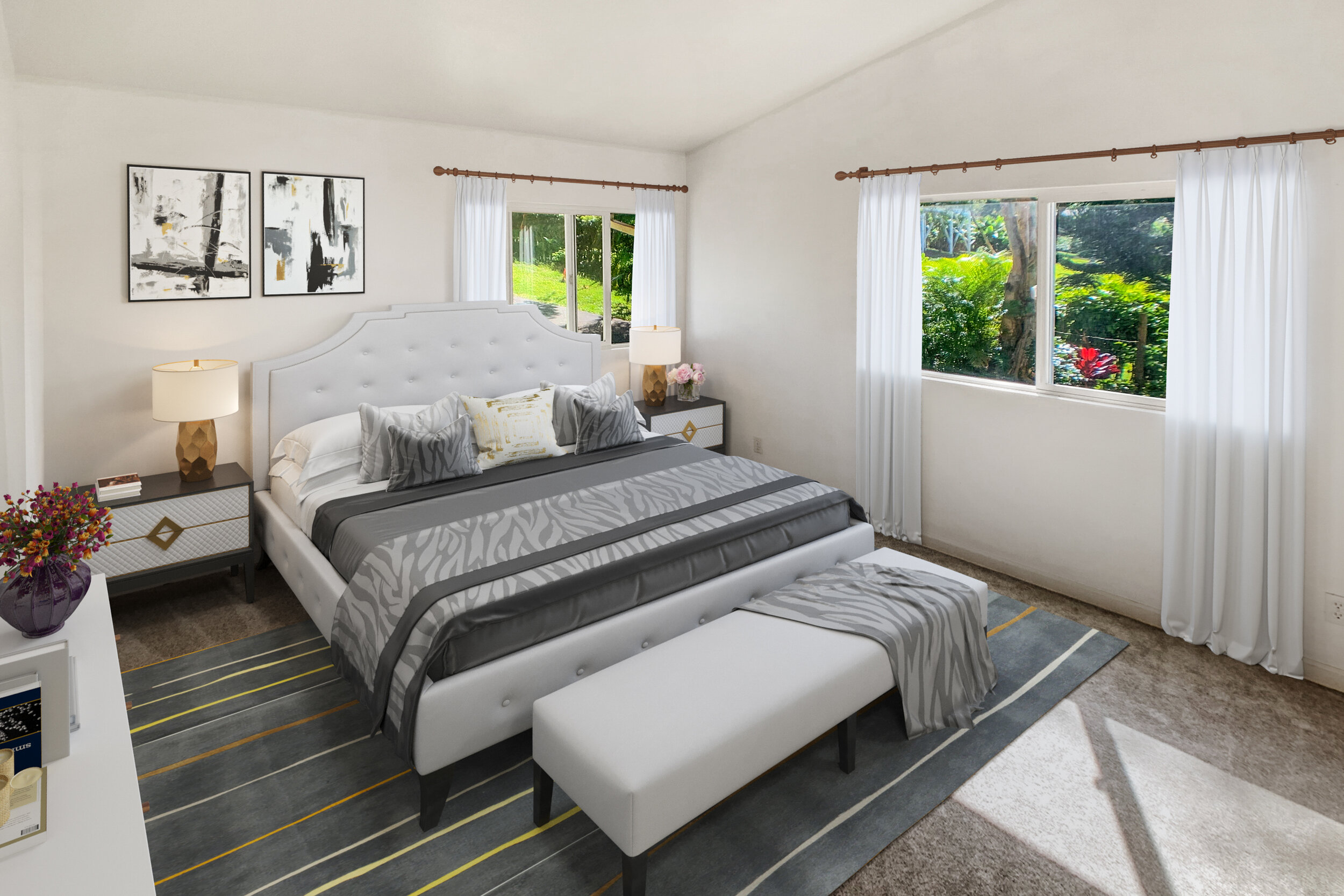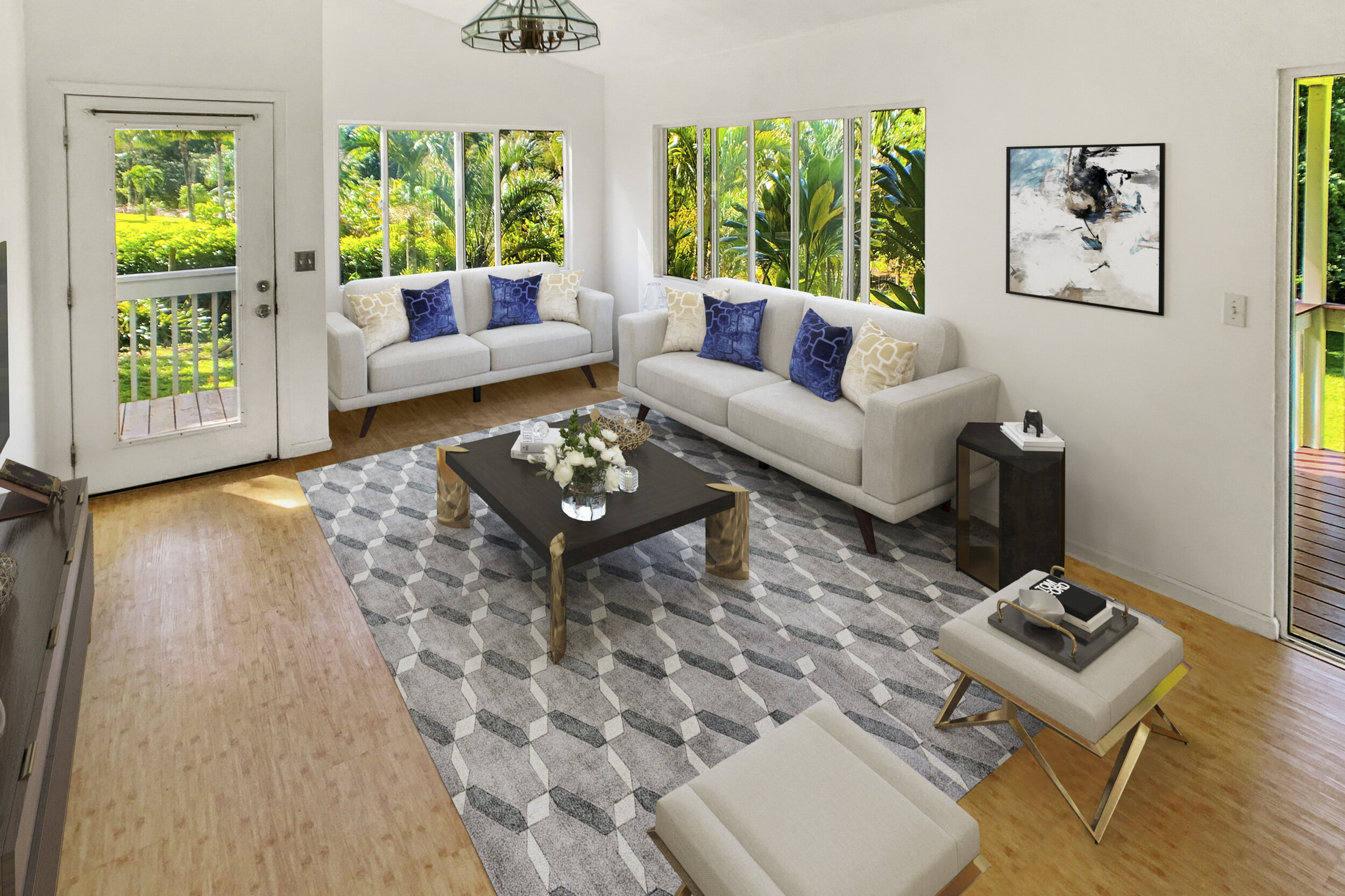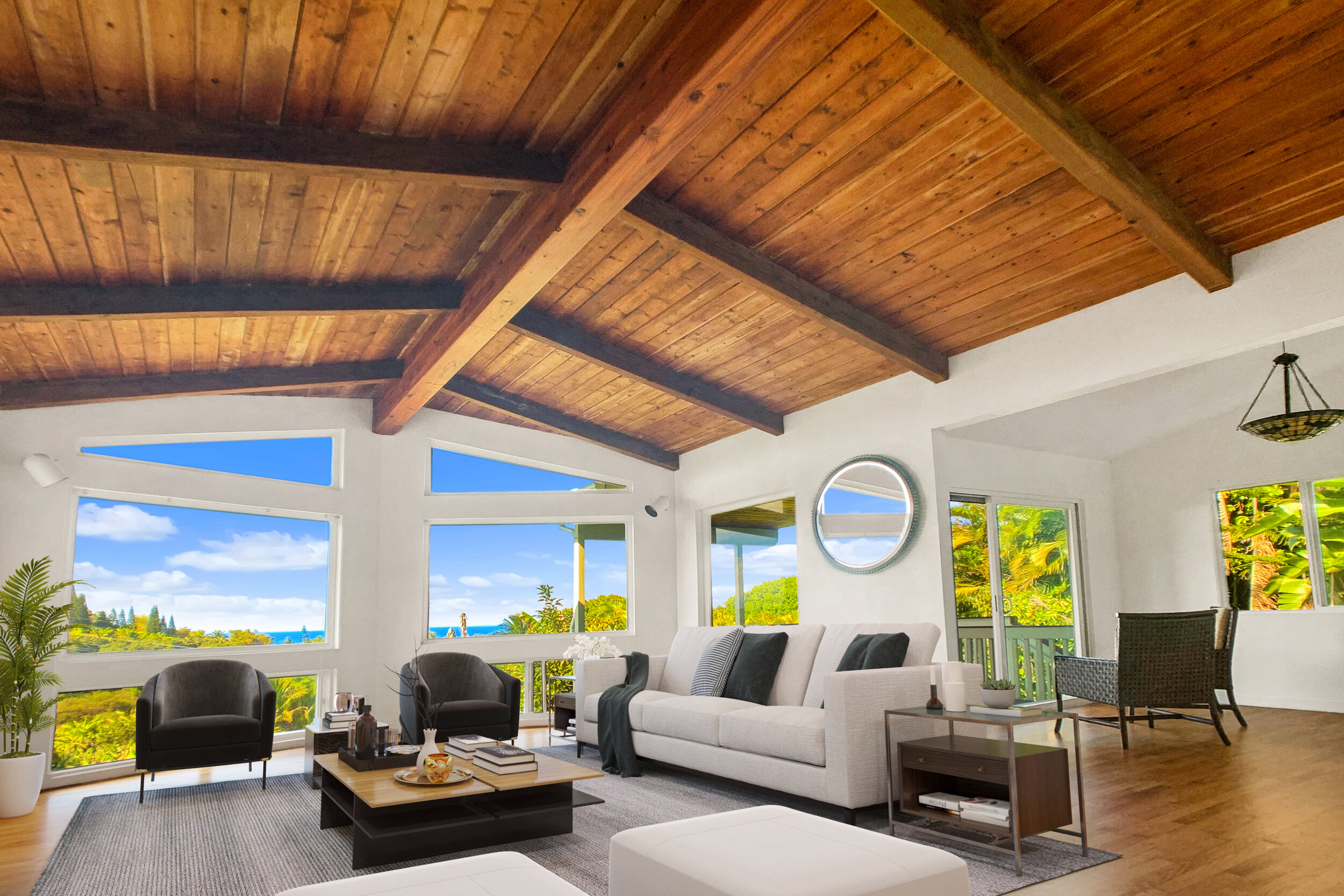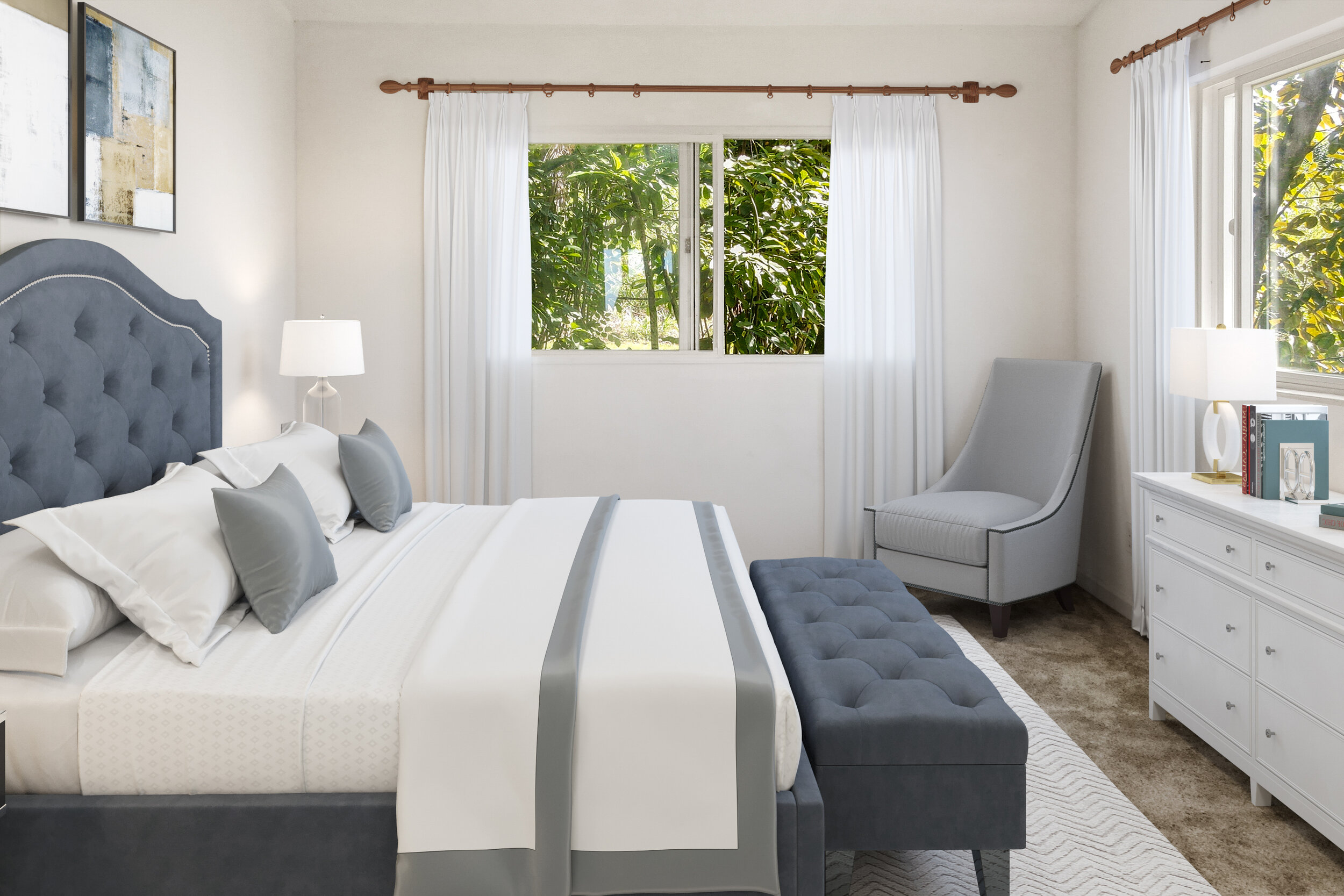Virtual Staging: Turn your ordinary property into Amazing listings
Buyers will imprint on the first photos they see of a home and will develop their first positive feelings and attraction to a property at that time. How can Virtual Staging help attract your buyers?
As more home-sellers turn to virtual staging, we have to ask: Is it really worth it, and does it compare to traditional staging?
According to the National Association of Realtors®, 77 percent of buyers’ agents say that staging makes it easier for buyers to visualize themselves living in a home. As many as 38 percent of sellers’ agents say that they stage all their clients’ homes before listing. Since the benefits of staging have a direct impact on listing performance, virtual staging was developed to give the same benefits that are looking for an alternative to traditional staging.
To determine whether virtual staging is a viable alternative for you, you have to know what it is and how it compares to traditional home staging.
What is Virtual Staging?
Virtual staging, like traditional staging, is decorating a property to showcase its best features and qualities in an effort to make it more attractive to buyers.
“I have always explained to my sellers that buyers will imprint on the first photos they see of a home and will develop their first positive feelings and attraction to a property at that time” describes Jen Williams, Real Estate Market Manager at Redfin.
But like the name implies, virtual staging is done with a computer. There’s exactly zero real furniture, area rugs, potted plants or other décor involved. Professional virtual stagers digitally insert decorative elements in high-resolution photos to show empty rooms’ full potential.
Virtually Staged Kamalani in Kihei
What Homes is Virtual Staging Best Suited For?
Virtual staging won’t work for all homes – in many cases, traditional staging is a superior choice. However, it can be a huge benefit if it’s done properly in:
Vacant homes
Homes with outdated furniture
Properties with tenants in them, which leave the homeowner little control over the space’s appearance
If you still occupy your home and you can stage it to make it as appealing as possible to potential buyers, whole-house virtual staging isn’t for you. (You can still virtually stage some rooms if you and your agent think it’s appropriate, though.)
Virtual Staging vs. Traditional Staging
Virtual staging is usually a lot cheaper than traditional staging is. Here’s a quick glimpse at what you’re looking at:
Virtual staging costs somewhere between $39 and $199 per room, depending on the contractor you use, your location and the amount of space you need staged.
Traditional staging can cost several hundred dollars per month, depending on the stager you use, how much furniture you need to rent, your location and the number of rooms you need staged.
Price isn’t the only sticking point, though. Each method has its own pros and cons that you’ll have to consider, particularly if you’re trying to sell an empty house.
Pros and Cons of Virtual Staging
Virtual staging can help sell a home faster and for more money – but only if it’s done right. You still need to hire a professional who knows how to take good photos for virtual staging, and you need to work with a reputable company with a great portfolio of completed work.
Check out these side-by-side lists of the pros and cons of virtual staging to help you make the right choice:
Pros of Virtual Staging
Can help you showcase an empty home’s best features
Is cost-effective when compared to traditional staging
Attracts prospective buyers’ attention online
Offers you the opportunity to stage any number of rooms
Allows you to stage flex rooms in multiple ways
Cons of Virtual Staging
Becomes more expensive when you need to remove furniture or items from photos
Can be difficult to use when the house is occupied, unless you have previous listing photos
Furniture and décor only exist in the virtual space – buyers will never see it in person
Pros and Cons of Traditional Staging
Traditional staging, which successful real estate agents have been using for decades, doesn’t always require a professional stager. However, it does require an eye for detail and the ability to create a space that appeals to the widest possible range of buyers.
Check out these side-by-side lists of the pros and cons of traditional staging to help you decide whether it’s a better choice for selling your home:
Pros of Traditional Staging
Gives buyers real-life perspective when they tour the home
Prevents buyers from having to tour a completely empty, vacant home
Appeals to buyers’ sense of imagination
Makes spaces appear larger and enables prospective buyers to gauge size
Helps your home stand out in buyers’ memories after they leave
Cons of Traditional Staging
Can be expensive, and you’ll keep incurring costs until the home sells
Requires stagers to bring in furnishings, décor and other items
May be unnecessary, depending on how quickly homes are selling in your market
Sample Virtually Staged Photos - Original Photos provided by Agent





Common Virtual Staging Mistakes
The biggest mistake a seller can make is hiring a virtual staging company that’s not good enough. Virtually staged photos should be exceptionally realistic – so real, in fact, that buyers won’t know they’re computer-generated unless someone tells them.
Other mistakes many people make with virtual staging is:
Failing to provide prospective buyers with photos of empty rooms as well as staged rooms. Buyers may expect the home to look the same as it does in its listing photos, so provide both.
Choosing virtual staging that makes the home look worse, not better. You have to be careful not to overdo furniture and decorative elements in staged photos.
Using virtual staging when it’s unnecessary. Replacing furnishings and decorative elements in photos when they’re perfectly fine to begin with can be a significant waste of time (and money).
Could Virtual Staging Help You Sell Your Home?
Virtual staging can be a tremendous asset when you’re selling a vacant home, or one that has wild-card tenants or outdated décor. It allows prospective buyers to view the right vision of the home – not an empty, cavernous space, but one that’s comfortable and easy to live in.
Have you used virtual staging to sell a home? We’d love to hear your story and how it worked out for you, so please share your thoughts in the comments below.
Check out our Virtual Staging Services.
Article Reference: Bersin, Angie. at Redfin.com



